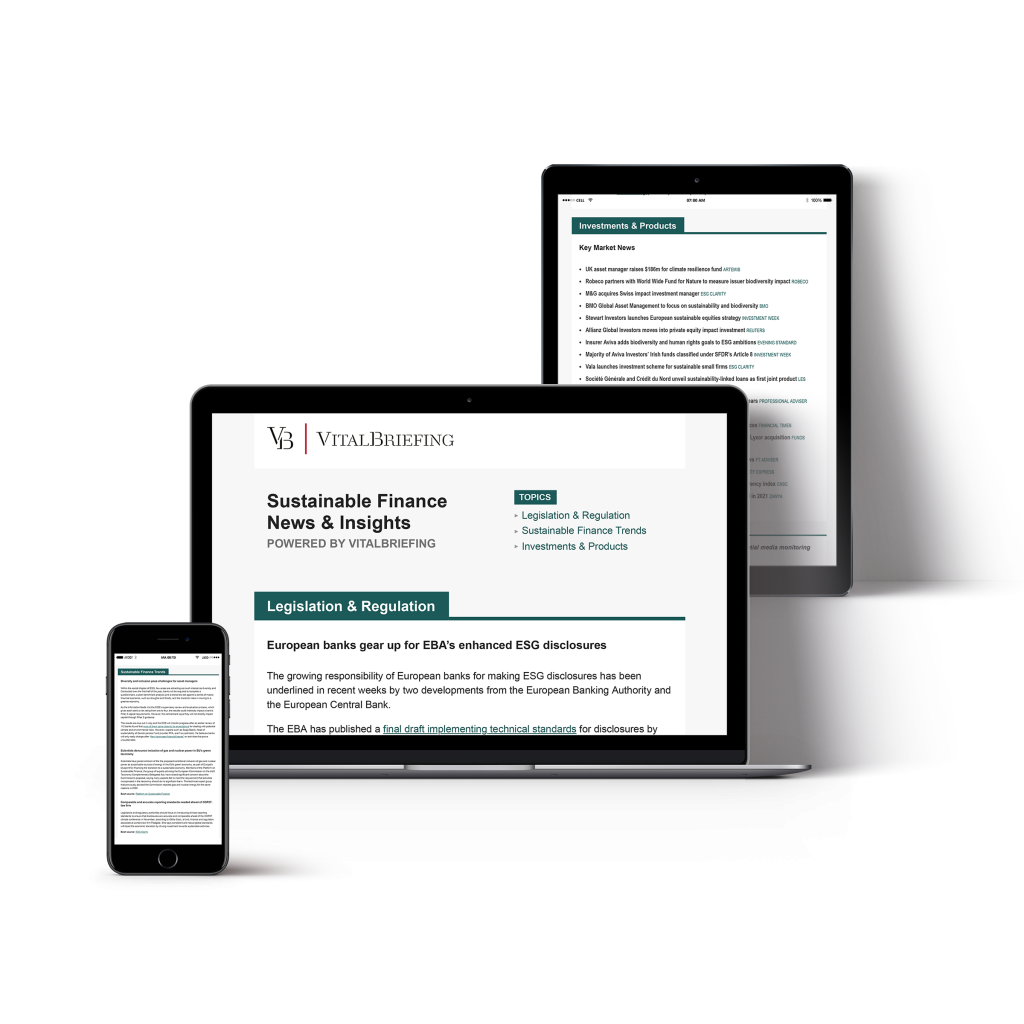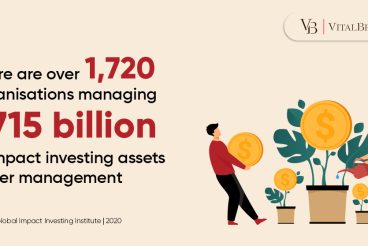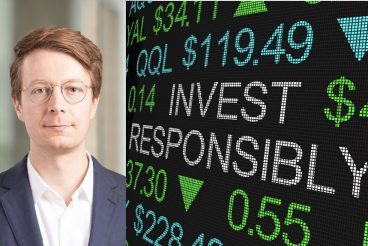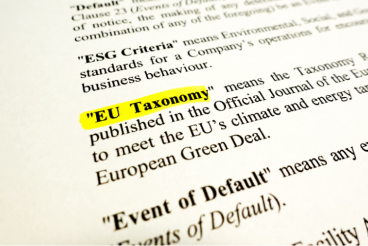
Regarding sustainable finance, the financial sector is by far more regulated than the non-financial sector. Tom Pfeiffer, Independent Director and Sustainability Management Advisor, believes that the ‘real’ economy is neither aware of, nor ready for, the impact that upcoming sustainable finance regulations will have on their business. He’s been working in the field for years, first as a partner at Deloitte in Luxembourg, where he was Sustainability Services and CSR Leader. In this interview, he explores the link between the two sectors, whilst remaining confident that this lack of awareness shouldn’t be a barrier to achieving current sustainability objectives.
Can sustainability goals and the drive for profitability be reconciled for investors, financial institutions and corporations? What kind of rebalancing or reshaping of the capitalist economic system might be needed to achieve this?

Capitalism goes where it’s cheapest. If fossil fuels are cheap, it will go towards fossil fuels. If green energy is cheap, it will go green. Ultimately, governments must regulate by introducing new tax systems and environmental policies that push the forces of capital and capitalism into the green economy.
Indeed, political controls are needed. To achieve net zero by 2050, specific laws must be enforced.
Don’t get me wrong, I am not in favour of establishing too many laws and regulations to force this shift to a more sustainable world. However, we are getting close to the point where talking is not enough. Action is needed.
Fortunately, we’re seeing some of the rebalancing and reshaping you refer to in your question.
The European Green Deal and the related upcoming laws and regulations will help to reconcile sustainability goals and profitability aims for investors, financial institutions, and corporations. And it’s much more common now for savers and retail investors to look at what impact they can make with their investments.
In addition, it’s well known today that sustainable investment funds outperform general traditional peer funds. The Morgan Stanley Institute for Sustainable investing found that in 2020, during the coronavirus pandemic, sustainable US equity funds outperformed their peer funds by 4.3% points. In 2019, it was 2.8 % points.
Meanwhile, according to Morningstar’s annual Sustainable Funds U.S. Landscape report, sustainable funds in the US last year broke nearly every previous record, attracting a 35% increase in net flows over the previous record set in 2020.
The Corporate Sustainability Reporting Directive (CSRD) will connect the ‘real’ economy to the financial sector as it’s obliged by the Sustainable Finance Disclosure Regulation (SFDR) to report on non-financial performance to investors. The financial sector will then push corporates to a more sustainable business model.
All of this points to a possible transition of the current capitalist economic system. To achieve that, however, financial institutions and corporations must gain a mutual understanding of their needs to make their businesses thrive under a ‘new normal.’

Have officials across the globe fully exploited the opportunity from economic stimulus and recovery spending to boost sustainability in their economies? What other steps should they be considering?
The theory and sentiment behind green deals is straightforward: green deals are strategies to make national and international economies more sustainable. Sustainable finance is the means to finance the transition to a more sustainable economy.
The bottleneck today comes down to the implementation of those strategies — the action taken – or lack thereof – to ensure the follow-through is where authorities are falling short.
Let’s take, for example, the Circular Economy (CE). Access to finance for CE business is not easy to come by because the associated financial risks are different than those of linear businesses. Moreover, investors don’t necessarily know how the CE works and, crucially, entrepreneurs often don’t know the requirements to access relevant finance opportunities.
We know theoretically that greener and more sustainable economies are achievable – with the right action.
For instance, if national budgets become green and the public supply chain is organised in a sustainable way – e.g. public buildings going circular – there’s a knock-on effect on suppliers who will then have to adapt their supply chains, too.
Public subsidies should also be reviewed to avoid non-sustainable spending and to support sustainable activities such as social housing, circularity and green energy. If that were to happen, governments would have to tax resources, rather than labour, to accelerate the implementation of the green deals.
The government should serve as a role model.
At the beginning of the Covid crisis, many politicians saw it as a wake-up call. There was a lot of talk about creating a more resilient and sustainable economy.
‘Producing and consuming local’ was the slogan. This should have created enough momentum to spark real action, but as we enter the recovery phase, it looks much easier to continue as before.
One worrying statistic: carbon emissions are back at the levels of pre-covid times.
Sustainable finance may be evolving, but this is happening far too slowly. Regulations are not yet in place and are, in fact, being delayed rather than brought forward.
I guess the short answer to your question is that the green deals have had minimal impact on the relaunch of the economies.
How easy will the EU’s CSRD be to implement in practice? Given the delays to the SFDR, is the timetable for adoption and implementation realistic? How likely is the target of first reporting in 2024 on 2023 information to be achieved?
The Corporate Sustainability Reporting Directive (CSRD) is intended to provide both professional and private investors, as well as other stakeholders, with the information they need to assess companies’ commitment to sustainable practices and outcomes. It was adopted in April 2021 by the European Commission to replace the Non-Financial Reporting Directive (NFRD) in 2023. The NFRD required reporting by roughly 11,000 companies in the EU, while it is estimated that around 50,000 companies will be impacted by the new directive.
Compared to the NFRD, the CSRD standardises disclosure requirements and makes them mandatory. A change that will harmonise the information at the disposal of investors.
The fact that the audit of the information will also become mandatory is another effort to make reliable, non-financial ESG information available to the financial sector in their investment decision process.
How easy it will be to implement the directive in practice, however, is a tough question to answer when you consider the pushback it’s getting.
Many industry lobbies are critical of the high cost this may generate to companies and the potential impact it will have on the disclosure of production processes and other business secrets. There are also concerns regarding the availability and the quality of the data required to ensure reliable reports.
On that point, while the delays in regulations may not prevent the concerned parties to report in 2024 on 2023, they don’t exactly encourage them to move quickly. Especially since it isn’t easy or straightforward for corporates to have all the processes and technological support in place to collect relevant high-quality data for the first report.
In the interest of supporting a smoother transition, I believe a good stopgap may be to have a first CSRD reporting in 2024 (NFRD +) that won’t be public but can be used by regulators and the corporates to see where they stand. The learnings from the process can be used for the first fully-compliant public CSRD report the following year.
Does divestment simply transfer problematic activities to investors such as hedge funds and sovereign wealth funds that are less transparent and under less pressure to respond to public opinion and government persuasion?
To answer this question, I need to give a bit of background.
Divestment strategies are not new in the investment industry. What we know is that a certain level of portfolio rotation improves the performance of a portfolio. Therefore, divesting from stranded assets makes sense.
However, having institutional investors divest immediately from fossil fuel or other non-sustainable assets simply isn’t an option. Let’s be real – it would have unprecedented negative impact on the world economy.
While we understand today that fossil fuels are hurting our climate, there aren’t sufficient renewable energy resources available to compensate for a complete move away from gas and petrol. As a result, institutional investors are caught between premature write-downs versus devaluations of their investments, which would leave them with an investment portfolio full of stranded assets or having to disinvest in order to limit losses.
And, frankly, it’s not only the fossil fuel sector that is impacted by this reality. The same goes for other sectors like infrastructure, agriculture, transport, cement and steel.
We can’t deny that problematic investments have for some time been transferred to hedge funds and sovereign wealth funds. And it makes sense if the primary goal is to maximise returns.
Because hedge funds are market direction neutral, and make money based on how the market fluctuates, they can take advantage of market movements. Meanwhile, we have to remember that sovereign wealth funds have been established by governments to support national budgets and to invest in the financing of future projects – not to focus on sustainability.
As a result, today, the future is only in small part financed by sustainable investments. Why? Because the focus is still on achieving the best financial returns, to support national industries (regardless whether or not they’re sustainable) and to support national economic growth and development.
Financing of the climate transition was supposed to be a central theme of COP26. To what extent has this been addressed?
COP26 had four goals:
- To secure global net zero by mid-century and to keep a maximum increase of 1.5 degrees within reach.
- To instigate adaptation to protect communities and natural habitats.
- To mobilise the finance necessary to meet the first two goals.
- To work together on delivery.
Let’s be honest, though. As long as goal #3 is met and sufficient finance is mobilised, goals #1 and #2 are still within reach. But none of that matters if we fail on goal #4.
And that’s the rub. How realistic is it to expect that there will be a consolidated global effort to deliver?
COP26 was, above all else, politically-skewed, i.e. discussions focused on pledges and negotiations that served the best interest of the countries represented rather than leading to any real commitment to binding, common decisions.
One example: before the conference even kicked off, discussions regarding the emerging Global Goal on Adaptation (GGA) turned into a debate on wording, definitions and methodology to be considered at COP26. More concern was placed on ensuring these were acceptable to all the countries present than on the potential common proposals related to the essence of the GGA.
Don’t get me wrong. It is a complex topic. But the GGA is critical. It directly influences the effectiveness of international funding that is desperately needed by developing nations.
So, what came out of COP26 on this front? Unfortunately, developing nations were left frustrated: in the interest of saving the ‘broader deal’, stronger provisions on loss and damage were not included in the final text.
Let’s look more closely at some of the biggest issues tackled at COP26.
Prior to the conference, the goal of hitting a target of $100 billion in climate finance by 2023 was considered to be running behind schedule. As such, efforts were supposedly made to right that ship. The Organisation for Economic Cooperation and Development (OECDP even concluded in its analysis of COP26 that an agreement was close to being reached that will see funds mobilised on an annual basis by 2022, giving the organisation confidence the goal will be reached in 2023.
The reality? Those firm commitments – the official commitments – are not sufficient to reach the 1.5- degree target. A more realistic outcome is that they will reach only 2.4 degrees.
If you’re wondering how that disconnect is possible, it’s because some countries, such as India, made some last-minute promises to support global efforts. Those supposed commitments are taken into account despite being non-binding.
Fortunately, it’s not all doom and gloom. If those promises are kept, we could reach 1.8 degrees of warming, says Corinne Le Quère of the Royal Society Research and Professor of Climate Change Science at University of East Anglia.
And although nations agreed at COP21 in 2015 to meet every five years to fix their Nationally Determined Contributions, it was decided at COP26 to meet again in a year’s time. This may be a positive sign that those promises will become actual commitments within ‘acceptable’ delays.
Are initiatives such as Mark Carney’s Glasgow Financial Alliance for Net Zero (GFANZ), with its claim to mobilise institutions overseeing $130 trillion in assets, capable of driving change at the companies in which they invest?
Launched in April of last year, GFANZ brings existing and new initiatives together under one common forum. More than 450 firms from 45 countries responsible for over $130 trillion in assets pledged to join forces to decarbonise the global economy.
In my eyes, GFANZ’s “commitment to accelerate the decarbonisation of the global economy” is an important one. The alliance is steadfast in its belief that financial sector expectations, best practices and ambitions for corporates must be clearly set out, and that a common process between the financial sector and the real-economy is critical to achieving decarbonisation targets and climate goals.
The optimist in me is confident that GFANZ is capable of driving and inspiring such change with the $130 trillion at its disposal to invest – if its members truly want to achieve this aim.
The pessimist in me, however, can’t help but worry that it all may have been greenwashing, as its investors didn’t actually follow through on committing the funds as promised that were earmarked for green technologies and other green investments.
Can the EU’s sustainable finance regulations provide an international model for sustainability rules?
There is plenty of evidence pointing to the fact that the EU took the lead on sustainability legislation and integration.
In 2018, Europe launched its “Sustainable Action Plan” to meet commitments made at the 2015 Paris Climate Agreement. From there, the basis for the EU regulatory framework was born, and was then strengthened by the 2020 EU Green Deal.
While early acceptance in the Old Continent of ESG investing provided EU regulators with that first-mover position, it’s these regulatory commitments and the subsequent follow-through that have led to Europe currently accounting for half of global ESG assets.
Nevertheless, although EU regulations can certainly serve to other countries as a model to replicate, they are not the one and only applicable model. Consequently, because of this the development of an international standardised approach to sustainable finance is a complex beast.
Though the EU may have been an early-mover in terms of ESG, it is not the only economy increasingly placing sustainable finance and sustainability at its forefront. Taxonomies, the basis of sustainable finance labels and sustainability reporting have not only been developed in the EU but also in China, Malaysia, Bangladesh and Russia.
Some are seeking to go even further. The incoming UK taxonomy will build and improve on those that already exist, including the EU taxonomy. Plus, just before COP26, the UK announced that it will be the first G20 country to make disclosing of climate risks and opportunities mandatory from April 2022, a bold move in line with the Taskforce on Climate-related Financial Disclosures.
My point is this: as more and more sustainable finance-focused models are developed across the globe, we shouldn’t be asking whether EU regulations could provide some sort of international model for sustainability rules. First, we need to question whether the EU-implemented measures have actually been effective so far.
So… the short answer: there remains a lot to do.
How significant is the growing shift in pushing corporations to undertake genuine commitment on climate and other sustainability issues?
There have certainly been some significant headlines recently that would suggest we may be at a tipping point.
The winning of board seats at Exxon by activist investor Engine No. 1 has highlighted the growing success of shareholder initiatives to oblige corporate boards and management to take greater account of sustainability factors. Similarly, large institutional investors such as BlackRock have become more willing to challenge the companies in which they invest in shareholder votes.
The reality, though, is that we are not there yet. Ultimately, ESG investing is only possible if sufficient ESG projects and sustainable corporates exist and are bankable.
As I stated above, however, it’s important to understand that we are still in the transition phase from conventional finance to sustainable finance. And what that translates to in a business context is that full commitment is not yet the norm.
Sure, the first pioneers are upping the pressure on corporates to take greater account of sustainability factors either by entering the boards or using their shareholder rights.
Though that’s a good start. If we look deeper at some of these ‘flagship’ examples, we may find more to the story.
Let’s take the earlier example of BlackRock, the world’s largest asset manager. The firm will no doubt have a major impact on the shift to sustainable investing and consequently force boards and management of corporates to consider ESG factors.
Indeed, having repeatedly voiced its commitment to invest more to confront climate change, Blackrock probably sees itself as a major actor in the transition to clean energy. Here’s the rub: the firm did not actually set targets nor define proportions of total investments that would go into sustainable businesses.
That’s a pretty important omission.
Unfortunately, it’s not just the financial sector we should be complaining about. Even though it’s commonly accepted that sustainable development will be the future for corporates since the money will flow in that direction, the timelines set are not really accepted by the actors of the real economy. Worse yet, regulations are of course seen as a burden rather than an opportunity.
There is also a significant gap in communication between the finance sector and the real economy. While financial institutions and corporates are already much more regulated in terms of sustainable finance, the non-finance sector does not yet understand the knock-on effect of these changes. This is one of the main obstacles blocking the shift to sustainability and may block as well corporates’ access to finance in the near future.
In the end, I think it will be legal and regulatory pressure that will push corporates to make the real shift to long-term sustainable value creation.
Do you need to stay on top of ESG and sustainable finance news? Check out the Sustainable Finance News & Insights Briefing, bringing you news summaries and market analysis on regulation, legislation, investment trends, products and more.
Produced by expert financial journalists, it cuts through the confusion, saving you time by delivering everything you need to know in one monthly newsletter.






